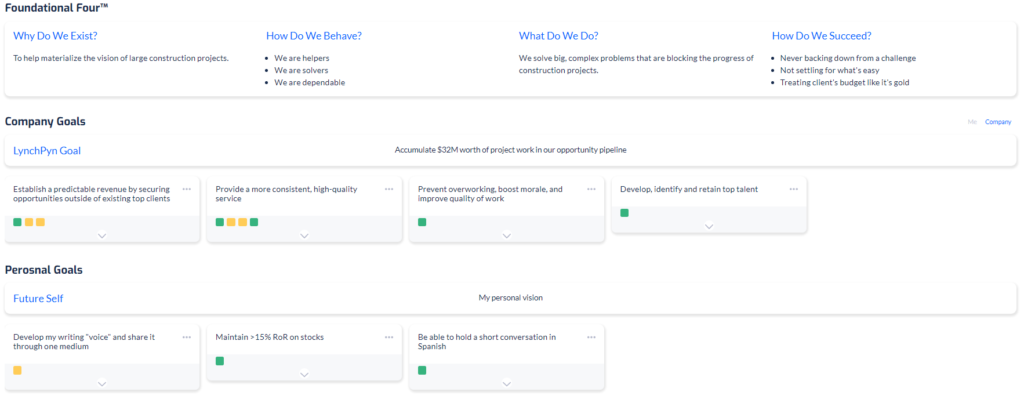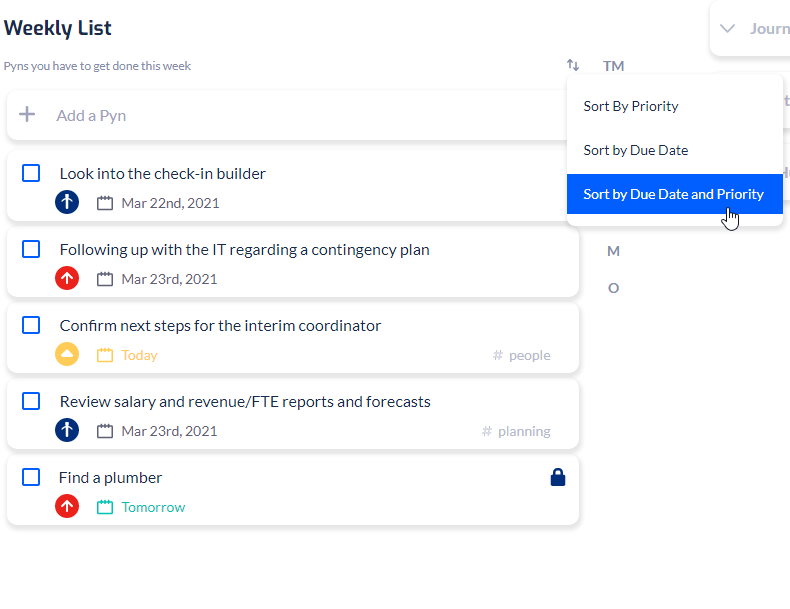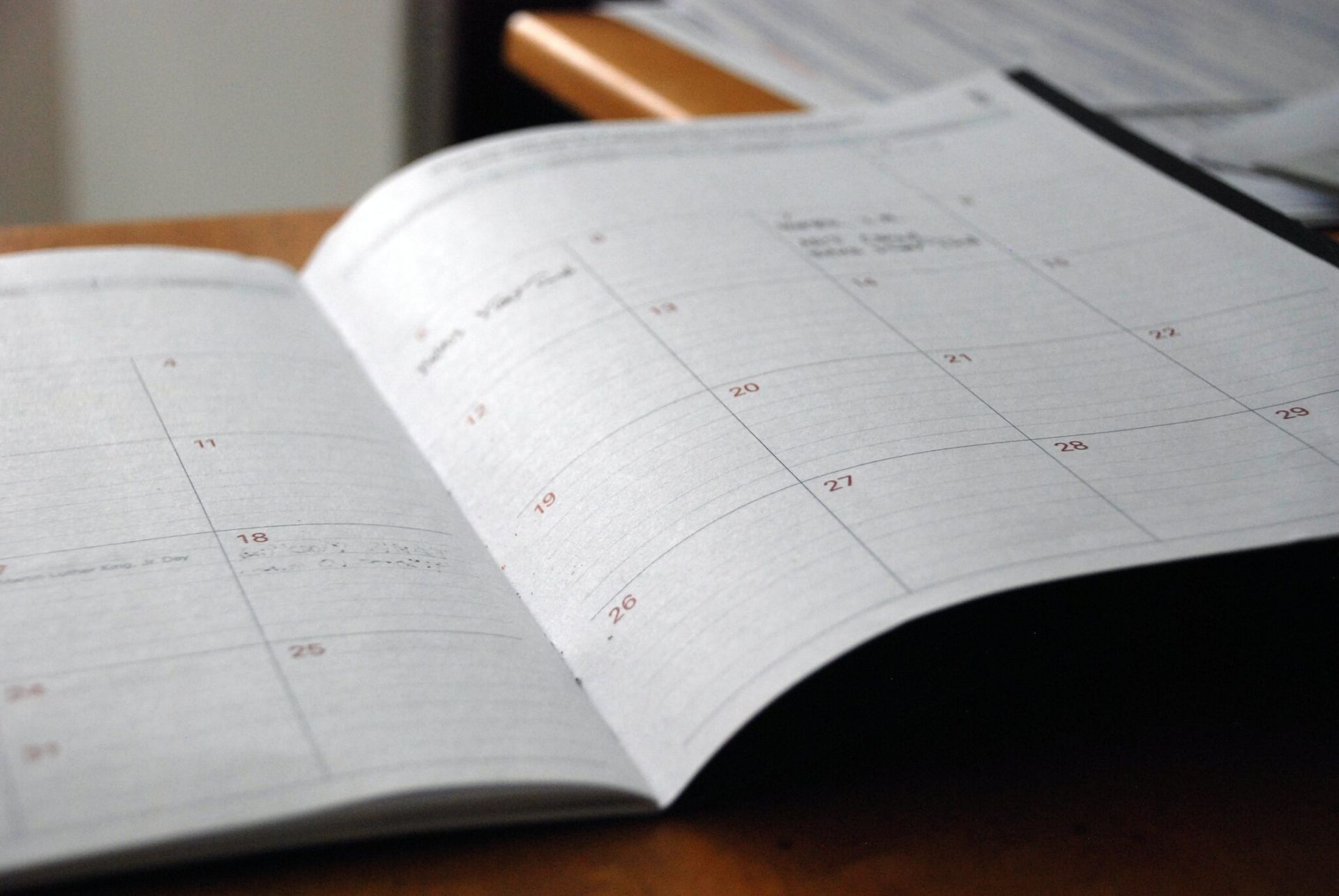Daily Planning Routine for High Performers
A Step-by-Step Guide to a Set Yourself Up for a Successful Day (+ Free Template & Examples)
Whether you are a morning person or a night owl, we have to start our day at some point. And we all have different morning routines.
Though there isn’t an ideal morning routine that suits everyone, some components can be part of your routine that help anyone become more productive and get ready to take on the day.
Your morning routine is the foundation for a successful day. What you do in the morning sets the tone for the remainder of the day. And having a routine that sets you up for success is often the difference between having a frustrating, firefighting-filled day and a productive, intentional one. It’s what high performers often credit for their ongoing success.
Here is a guide on the backbones of a successful daily planning routine we have developed at LynchPyn from studying thought leaders, research studies, and our very own clients. What you will see here is not the basics–we’re not talking about waking up early, showering, etc. You’re already doing a lot of the right things. These will help you become an even higher performer, get clear on your plans and focused on making full use of your limited time. Think of this as a starting point, a routine that you can take and make your own:
Download the simple daily planner template (and examples) here.
Morning Routine

Step 1: Check your email and calendar
Despite all the arguments made for not checking your email in the morning, you actually should. Well, sort of. You should check your email in the morning and scan for urgent and important correspondences, leaving the rest for later or simply archiving them. In doing so, you help others who are waiting on your response get unstuck , address time-sensitive emails and identify important items that require your action so you can add them to your list of to-dos.
Next, take some time to review your calendar. What is scheduled on your calendar is a direct representation of how you will spend your time–are there any events in your calendar that you can cut down? Are there meetings, appointments, or events that require preparation or can affect your time? Make the necessary changes to your daily schedule, build in some flexibility in your schedule and take note of to-dos.
Outcomes:
- Address urgent or important emails
- Clean up calendar
- Capture any relevant to-dos
Step 2: Connect with your goals.
At this point, you have cleared your inbox (or inboxes), have a good idea of what your day looks like today, and have a list of things you have to get done. But before you prioritize, it’s important to take a step back and realign yourself with personal and company goals. Review personal and company goals (and your Foundational Four , if you have them). You will use these goals as a filter to cut down your to-dos and truly focus on what matters most. LynchPyn
users see the following page as part of their daily planning process:
, if you have them). You will use these goals as a filter to cut down your to-dos and truly focus on what matters most. LynchPyn
users see the following page as part of their daily planning process:

Outcome:
- Refocus and realign your energy in the right direction by reviewing your written goals daily
- Cut down to-dos that aren’t aligned with your goals
Step 3: Find your top three priorities for today
What are the three things that need to get done and will create the highest impact?
That’s the question we want to answer here, applying the rule of 3 (similar to the Ivy Lee method ) to layout your plans for the day. Start by reviewing your ongoing to-do list (this would be the Weekly List in the LynchPyn framework, which you can learn more about in our Weekly Planning article) and sort them based on due date and priority. This means first sorting items by urgency and then resorting to them based on the level of importance. I like to think of this as an Augmented Eisenhower Matrix (AEM) . Same concept, but much easier to process and utilize. Again, you have the option right in your Weekly List in LynchPyn:

Once you have your list sorted, the three items you see on top of your list are most likely what you should focus on first. Move those three items over to your daily to-do list Using the rule of 3, you remove any distractions so you can do deep work , reduce “decision fatigue,” and force yourself to become focused on the right priorities .
If there is an item in your top 3 that has to absolutely get done (AKA your Most Important Task, metaphorical “frog” or LynchPyn Priority) and it requires your full attention, you may want to consider time blocking it into your schedule early in the day. If something’s on your calendar, others are less likely to distract you away from it, and you will usually get it done.
You must be thinking, “I have so many more things to get done than just three things!” . Don’t worry. Once you have completed those three things, you can revisit your weekly list and add one item at a time to your list. And if you don’t achieve all three items, push the remaining item(s) over to tomorrow.
Also, keep in mind, it’s a good practice to build in beaks and keep the last hour of your workday open to catch up with your schedule and wrap things up.
Outcomes:
- Find your top three priorities for the day
- Time block the Most Important Task (LynchPyn Priority) if needed
Step 4: Do a morning journal
Journaling in the morning can be a powerful tool to improve your mood and help you perform at an even higher level. Journaling at work has been proven to have many benefits on not only your professional life but also your personal life, such as reducing stress , boosting productivity , and improving focus.
A recent study by the Harvard Business Review surveyed hundreds of employees from several different companies whom they asked to keep a simple journal, and the result was aligned with the prior art:
“Keeping regular work diaries, which took no more than ten minutes a day, gave many of our research participants a new perspective on themselves as professionals and what they needed to improve.”
– Professor Teresa Amabile, Harvard Business Review
Here are three prompts PynBot, our personal coach chatbot, gives users at the end of the daily planning routine:
- What are you grateful for?
- Based on the day you have ahead, what mindset do you need to have, and how do you need to show up today to execute everything coming your way successfully?
- I need you to think about your day and what you can do today that will push you outside of your comfort zone–How can you be courageous or, as I like to say, “how will you lean in today?”
- Affirmation for today
The morning journal is the key to a clearer, happier morning as many other successful leaders have found (like Tim Ferris ), and this quote puts it into perspective:
“Once we get those muddy, maddening, confusing thoughts on the [virtual] page, we face our day with clearer eyes.”
– Julia Cameron, author of The Artist’s Way
Outcomes:
- Reduce stress
- Boost productivity
- Get focused
Daily Planning Wizard in LynchPyn

It’s easy to get caught up in the day to day and in checking off the tasks. But do you know if you and your team are working on the right tasks? LynchPyn helps you get focused on what matters so activity is not mistaken for progress.
Bonus: Unwind with an evening reflection habit
At the end of the day, we often find ourselves wanting to finish the day, perhaps watch some tv and “relax”. Though we may be physically relaxing, our thoughts continue to unravel and can occasionally bring anxiety and undealt with emotions. To truly unwind and relax, you need to get your thoughts and feelings out and close the chapter for the day. An evening reflection can be a useful habit to do just that.
Francesca Gino, the Harvard Business School professor, found through her studies that spending 15 minutes to write and reflect at the end of the day improves performance by over 20%.
“When people have the opportunity to reflect, they experience a boost in self-efficacy, they feel more confident that they can achieve things. As a result, they put more effort into what they’re doing and what they learn.” – Francesca Gino, HBS professor.
Here are a few examples of prompts PynBot offers LynchPyn users at the end of the day:
- What were your top three wins from today?
- Did you step out of your comfort zone? If so, what did you do?
- Where did you spend the time that wasn’t for your highest good?
- What was the one lesson you learned today that you would like to remember?
And always give yourself a space to write freely after using the prompts to capture anything else that you need to put out there.
Pro Tip: Do your morning routine the night before
This might seem counter-intuitive after talking about a morning routine. Still, you can get a head start on your day and reduce your decision-making fatigue early in the morning by following the same routine in the evening, perhaps after your evening reflection. By preparing yourself for the next day, you have more energy, you save time in the morning, and you can jump straight into execution.
American Express CEO Kenneth Chenault does this by capturing three things he wants to accomplish the next day. Obama did picking his outfit for tomorrow (blue or grey?).
Wrapping up
Implementing any new habit or routine is hard. But it’s doing the hard things in life that create the most impact. If it seems overwhelming to implement this AM (or PM, depending on if you want to follow the pro tip) routine, then start with one habit at a time. Regardless of when you decide to do it, try to stick with the same time of day for your daily planning session.
This is your chance to create a meaningful, fulfilling day. When you ask yourself at the end of the day, “Did I get anything important done today?” will the answer be “I got many things done today” or “I got the important things done today”? You decide what you take satisfaction in.
The saying goes, if you win the morning, you win the day.
We want you to win.
Download the simple daily planner template (and examples) here.
Love it or hate it, I’d love to hear your thoughts. Shoot me an email at parham@lynchpyn.com and tell me how you really feel. At LynchPyn , we are committed to building tools that help individuals (and companies) cut through the noise , get focused on what matters most , and deliver results .







